So many flowers bloom in September to feed the bees for the coming winter. The coincidence of this just proves that there is a God providing for the creatures on this Earth!
Those that do not believe that a God has put this all together, has never learned about the majesty of the Honey Bee.
All in all, 2023 has been a fantastic year for my Honey Bees. I lost one hive, and it was my fault that I lost it. The configuration of one of my hives (that I designed), is not to the bees liking. Not sure that I will put bees in that hive again.
So lets get into what is blooming.
WINGSTEM – Verbesina alternifolia –also called Yellow Ironweed & golden crown beard, this native, North American plant is host to the gold moth and the silvery checkerspot. This tough perennial has yellow flowerheads, about 1-2″ across, consisting of numerous disk florets. (there is also a white wingstem). It blooms late summer, early fall and has a long lasting bloom. It prefers full sun to light shade and spreads by long root rhizomes and seed. Habitats include moist prairies, moist meadows, woodlands, woodland openings & borders, pastures, abandoned fields, and roadside ditches. It will spread quickly, but it is also called “the Golden Honey Plant”. It is reported to be a very good honey harvest from this plant, a medium yellow with a fair to good flavor. It is also a source of pollen for native bees. I’d say this one is a “keeper”!
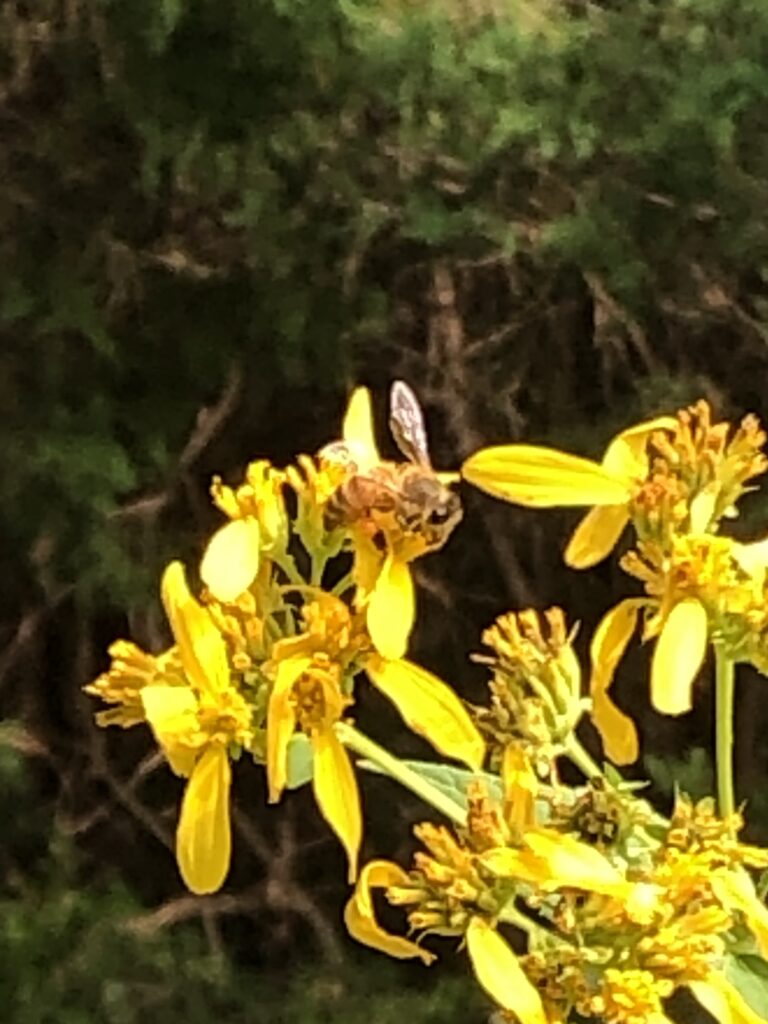
Golden Rod – Solidago – hundred species of Solidago and the most commonly found types (S. virgaurea, S. gigantea, S. canadensis). This perennial plant blooms in the fall, sometimes as early as July & August and through to October in some areas of the South. It produces much needed pollens and “stinky” nectar. Beekeepers may smell a “dirty socks” smell in the hive when the bees are collecting this nectar. Goldenrod also has anti-fungal, anti-bacterial, diaphoretic, antiphlogistical, astringent, spasmolytic, hemostatic, anti-mucus, expectorant and anti-oxidant properties. Most crave full sun, with the exception of woodland species which grow well in partial shade. Most species are easy to grow from seed.
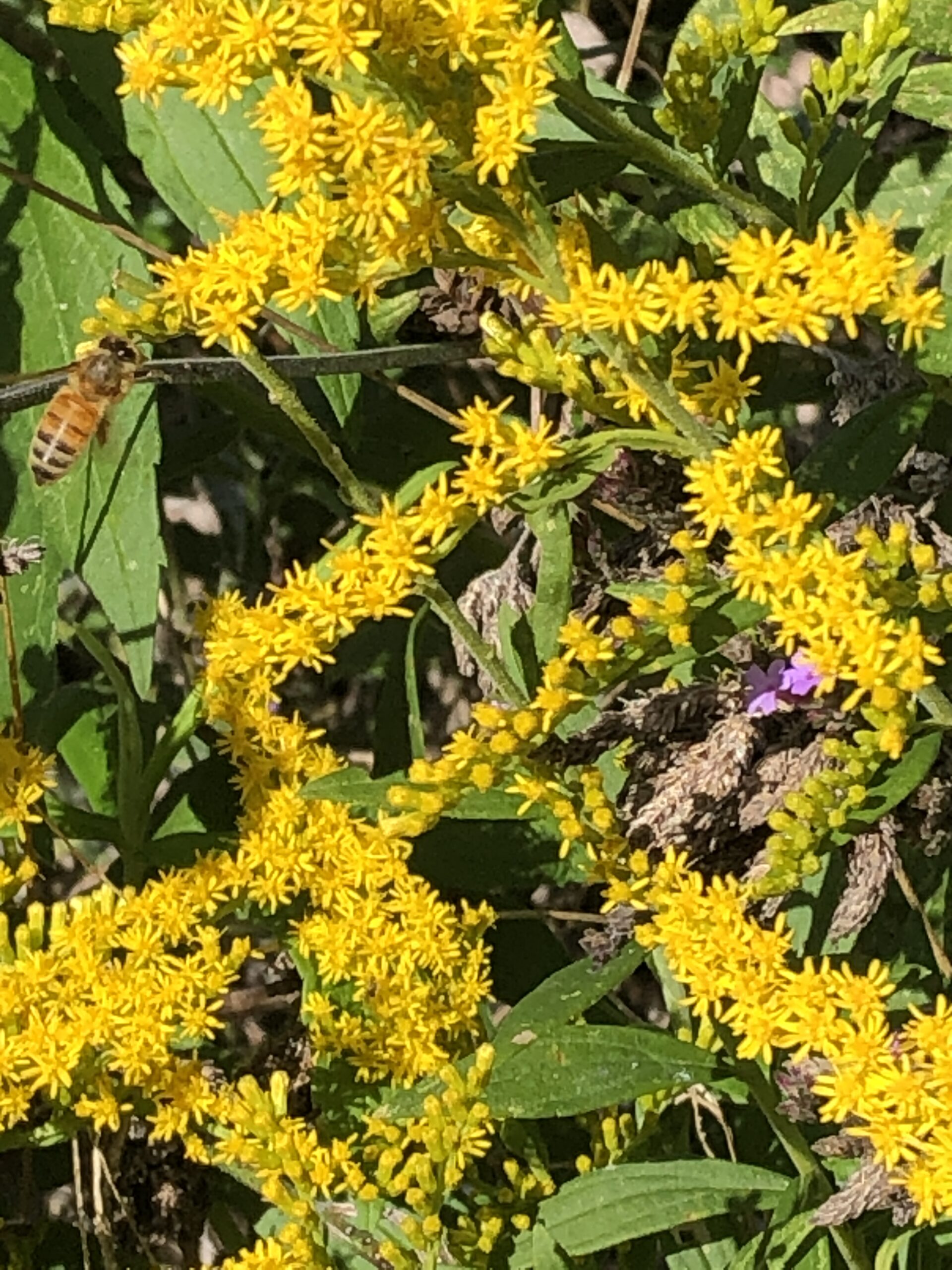
Woodland Aster – Asteraceae– There are approximately 180 species of aster. This sun loving perennial that blooms in late fall and is a late source of nectar and pollen for the honey bee. The food that this plant provides is necessary for the raising of late brood and what will become the “winter bees” in the hive. The bees being healthy is a very necessary component to the hive surviving the winter.
Bushy Aster or Wood Aster – Native to a wide area of the eastern United States, usually small white daisy looking flowers, Late source of nectar for pollinators. The nectar collected from this aster can smell a bit foul in the hive and can mimic a foul brood problem.
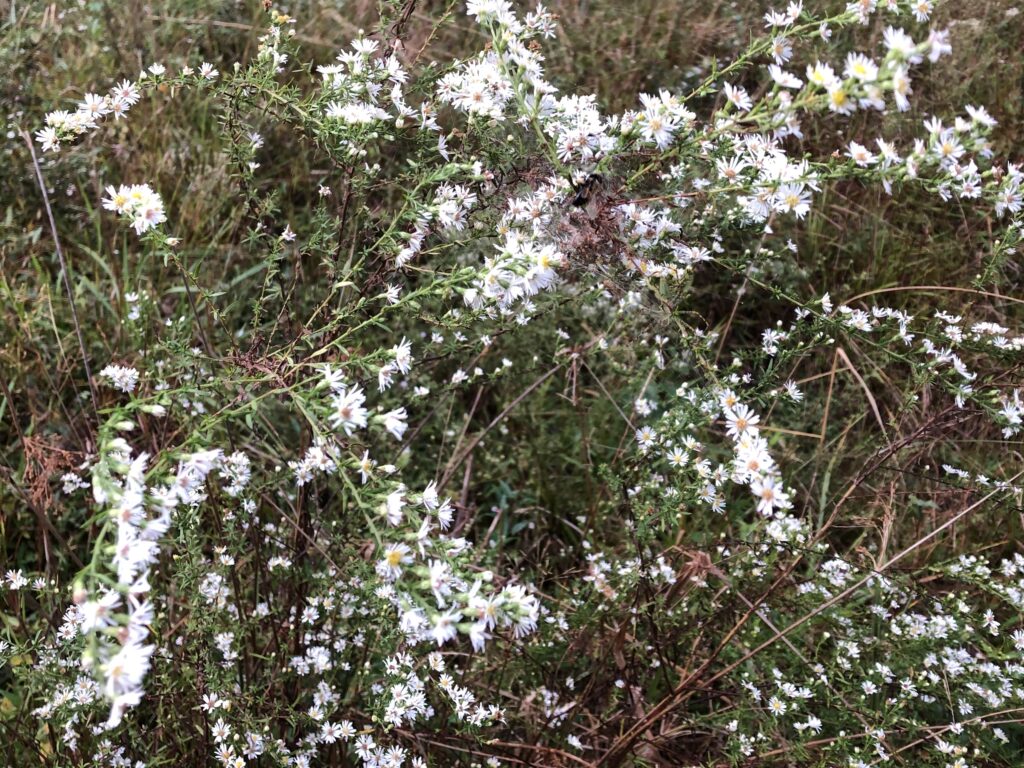
Sea Myrtle – Baccharis halimifolia– Groundsel bush, in the Asteraceae (daisy) family, is a native shrub to the coastal areas of the eastern US. It is commonly found in salt marshes, sandy locations, wet disturbed sites, near a road, fields, and is occasionally sold in the nursery trade for its unique foliage and flowering season. It is suspected that seeds have blown inland from coastal areas during hurricanes. The genus Baccharis is named after the god of wine and the species name hamimifolia. Bees forage on this flower for a short time, but there is an abundance of this plant so the nectar load can be significant.
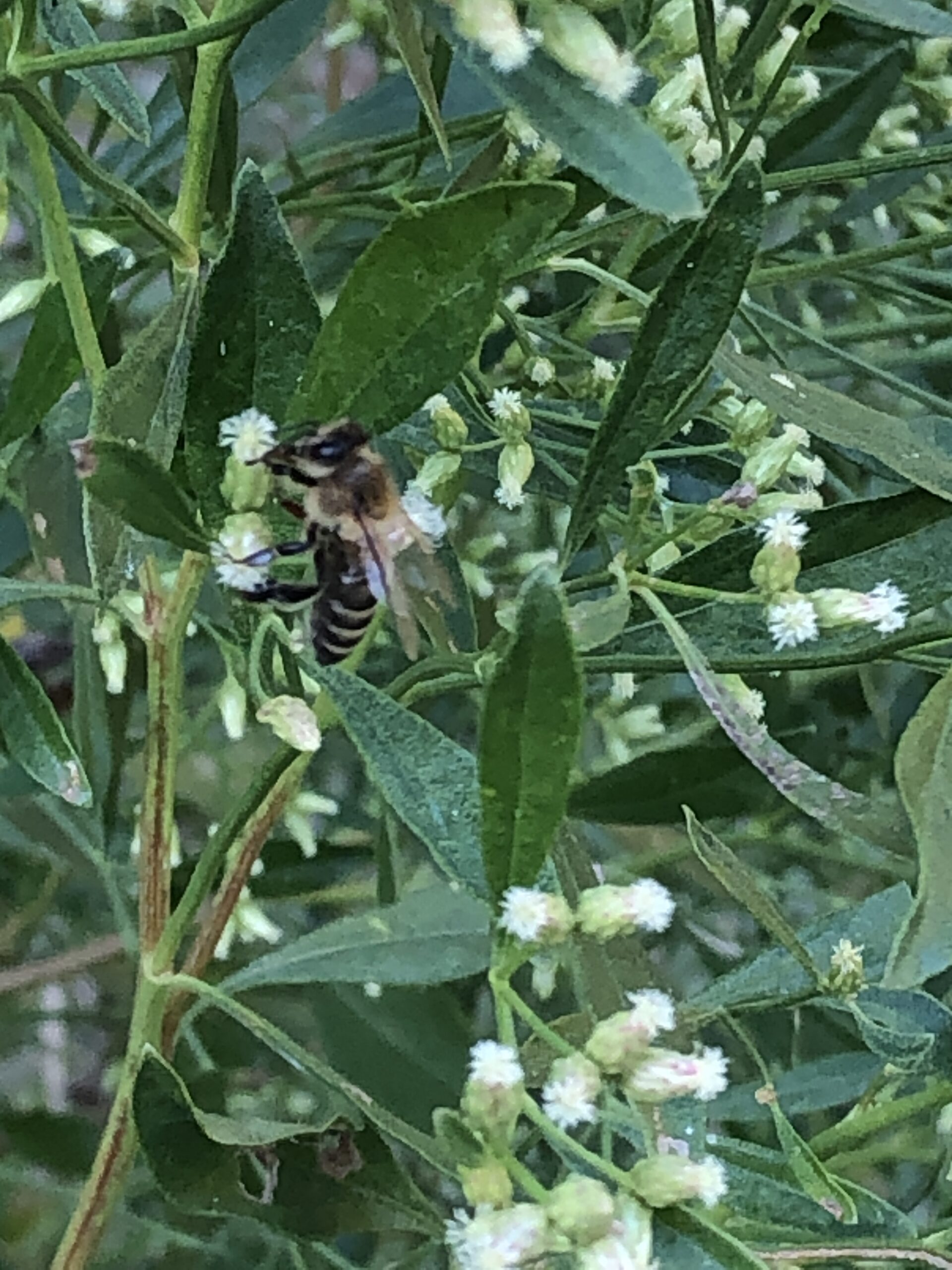
Ageratum – Asteraceae – Also called purple boneset. Late fall blooming purple “fuzzy” looking flower. Perennial native that provides a white pollen. Also called Purple Mist Flower. Blooms in late fall until frost. Naturalizes beautifully in garden beds,
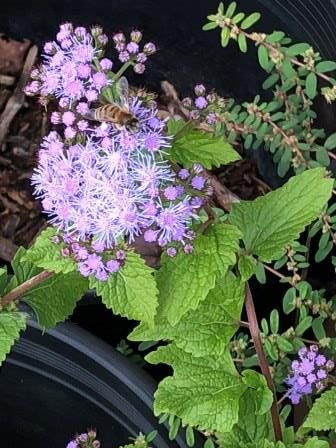
These are the BIG bloomers in September. There are more to come for October – So Stay Tuned!!!
Namaste’
The Bee Lady



